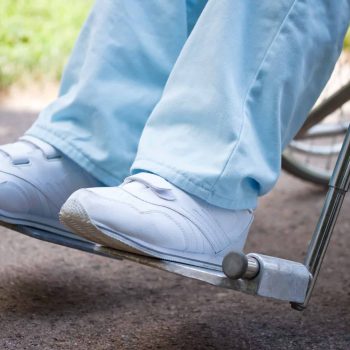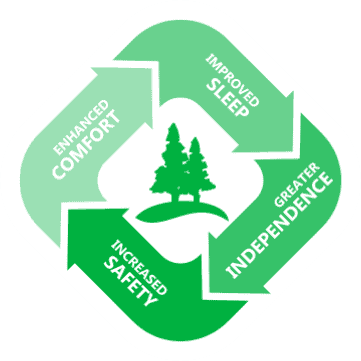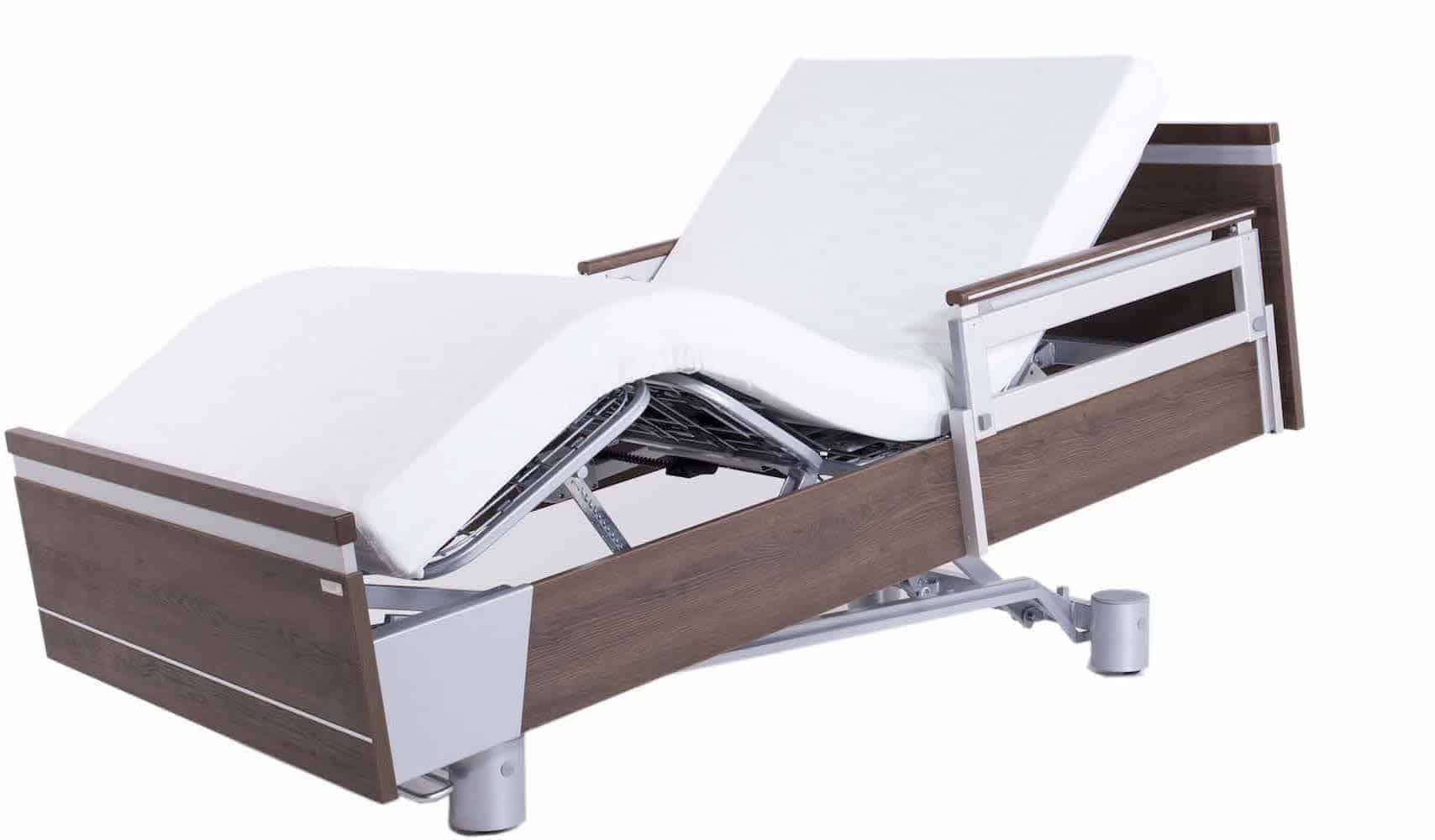Learn About How A Hospital Bed Improves Sleep Conditions For Paralysis Patients
How Paralysis Impacts The Body: A Brief Intro
Our muscles move when nerves send signals to them from the brain. Paralysis occurs when an accident or medical condition disrupts these nerve signals, preventing them from communicating with muscles. As a result, the person with paralysis cannot make voluntary movements. It can be partial, where the patient can control some muscles but not all; commonly, spinal cord injuries lead to paraplegia involving the legs. Paralysis can also be complete, where they have no control over any muscles.
Patients with injuries to their spinal cord also face paralysis, as damage to these nerves can affect their ability to feel or move parts of their body. There are common conditions that lead to prolonged periods of paralysis but aren’t always permanent. These include strokes, nerve disorders like multiple sclerosis, and Bell’s palsy (which causes temporary facial paralysis).
Many patients find the condition comes with other issues, including:
- Chronic pain
- Difficulty breathing
- Problems with heart rate
- Speech problems
- Blood pressure issues
- Blood clots and deep vein thrombosis
- Dysphagia (issues with speech and swallowing)
However, that’s not to say people with paralysis must lead restricted lives. Temporary paralysis, such as the results of Bell’s palsy, can diminish over time, even without rehabilitative treatment. When the patient goes through physical, occupational, and speech therapy, they can access exercises and adaptive or assistive devices to improve their function (and even get them back on their feet). Many are independent and highly active, and though conditions like quadriplegia require lifelong care from others, their minds can stay active. A critical tool for improved quality of life is a hospital bed.
Nearly 5.4 million persons live with paralysis in the United States. Brian S. Armour, Elizabeth A. Courtney-Long, Michael H. Fox, Heidi Fredine, Anthony Cahill, “Prevalence and Causes of Paralysis—United States, 2013”, American Journal of Public Health 106, no. 10 (October 1, 2016): pp. 1855-1857. https://doi.org/10.2105/AJPH.2016.303270
- Paralysis is the inability to move voluntarily due to disrupted nerve signals.
- Spinal cord injuries commonly lead to paraplegia involving the legs.
- Paralysis can also result from strokes, nerve disorders, and Bell's palsy.
- Paralysis can cause other issues like chronic pain, breathing difficulties, speech problems, and blood pressure issues.
- Though conditions like quadriplegia require lifelong care, patients can still lead independent and active lives.
Hospital Beds Can Be Vital For Those With Paralysis
Paralysis impacts one’s quality of life, and it’s natural for someone suddenly experiencing the condition to feel negative about their loss of mobility. However, support from friends, family, and medical experts can make a massive difference, especially in the first few months of living with the condition.
Mobility tools, in-home rehabilitative services, and accessibility furniture can all help those with paralysis live as independently as possible in a comfortable environment. In all these ways, hospital beds can be crucial for rehabilitation and adjusting to the effects of paralysis.
Because the body has endured a physical change, someone with paralysis or a spinal cord injury must have a suitable bed. The patient can have trouble with pain, breathing, or general discomfort. Many patients start by working with their doctor or a therapist to determine the kind of bed that will help them get the rest they need, including firmness, adjustability, and pressure relief.
Physical rehabilitation programs for bedridden patients with prolonged immobility are a matter of urgent research for a solution that will help health professionals and stakeholders to develop more adjusted programs and identify possible gaps. Parola, V., Neves, H., Duque, F. M., Bernardes, R. A., Cardoso, R., Mendes, C. A., Sousa, L. B., Santos-Costa, P., Malça, C., Durães, R., Parreira, P., Apóstolo, J., & Cruz, A. (2021). Rehabilitation Programs for Bedridden Patients with Prolonged Immobility: A Scoping Review Protocol. International Journal of Environmental Research and Public Health, 18(22), 12033. https://doi.org/10.3390/ijerph182212033
- Paralysis can impact quality of life, but support from loved ones and medical experts can make a difference.
- Mobility tools, rehabilitative services, and accessibility furniture can help those with paralysis live independently.
- Hospital beds can be crucial for rehabilitation and adjustment to the effects of paralysis.
- Patients with paralysis may need a suitable bed to address pain, breathing, and discomfort issues.
- Consulting with a doctor or therapist can help determine the right bed for individual needs.
A Hospital Bed Can Assist With Nurse and Caregiver Transfers
Hospital beds play a crucial role in facilitating transfers for patients who are paralyzed, but the intricacies of their design and functionality may not be apparent to everyone. These beds are expertly crafted to cater to the unique needs of patients who are immobile, paralyzed or have restricted movement. With adjustable features, hospital beds can be tailored to meet the individual requirements of each patient. Height, incline, and angle can all be customized to facilitate easier entry and exit from the bed into other situations, care positions or medical equipment. Side rails are also a vital component of hospital beds, as they can be raised to provide additional safety and prevent patients from accidentally rolling off the bed during a transfer.
However, the real magic of hospital beds lies in their ability to make these clinical or nursing transfers as effortless as possible for paralyzed patients. For individuals with limited mobility, transferring from the bed to a wheelchair or other mobility aid can be an arduous task. Hospital beds are specifically designed to ease this transition. Lowering the bed height enables patients to slide over onto a wheelchair or other device with greater ease. Additionally, some hospital beds have built-in lifts that provide further assistance with transfers by adding a so-called “sit to stand’ feature.
The use of assistive features significantly reduced the physical stresses for all repositioning activities. Zhou, J., & Wiggermann, N. (2020). The effects of hospital bed features on physical stresses on caregivers when repositioning patients in bed. Applied Ergonomics, 86, 103125. https://doi.org/10.1016/j.apergo.2020.103259
- Hospital beds are designed for patients who are immobile, paralyzed, or have restricted movement
- They have adjustable features to cater to individual patient requirements
- Side rails can be raised for added safety during transfers
- Hospital beds make clinical transfers easier for paralyzed patients
- They lower the bed height for easier sliding onto a wheelchair or mobility aid
- Some hospital beds have built-in lifts to provide additional assistance with transfers
Hospital Beds Provide The Right Amount Of Support
Learning to live with paralysis is challenging, with suddenly limited mobility causing dramatic changes to one’s life, activities and self-image. Over time and with rehabilitation, many people with paralysis learn to adapt. A Sondercare luxury hospital bed can accommodate an overhead trapeze helper bar, making it easy for those experiencing some paralytic conditions to adjust their position independently in the bed.
The SonderCare line of hospital beds all have accessible remote controls and an almost infinite number of positions. They are fully electric, meaning the user and their caregivers don’t have to use muscle power to reposition the bed. With the right accessories, they can even shift themselves while in bed. Our pressure-relieving mattresses will help those who must spend a lot of time in bed feel comfortable and avoid issues like bed sores.
What helps many people make the necessary mental adjustments that come with the condition is to have comfortable surroundings. If they can feel at home – rather than feeling institutionalized by their medical equipment – they will accept the changes more readily. SonderCare hospital beds and mattresses have upholstery and materials like ordinary beds rather than something you’d find in a medical facility.
Support is more readily available now than ever before. Consumers have access to many types of medical equipment that would, in years past, either be exclusive to hospitals or prohibitively expensive. SonderCare is changing both, ensuring patients with paralysis can find access to the hospital bed they need to live more comfortably and independently.
A nurse-led mobility program was effective in increasing safe, early mobilization of patients and improving the culture of mobility. Jones, R. A., Merkle, S., Ruvalcaba, L., Ashton, P., Bailey, C., & Lopez, M. (2020). Nurse-Led Mobility Program: Driving a Culture of Early Mobilization in Medical-Surgical Nursing. Journal of Nursing Care Quality, 35(1), 54-58. https://doi.org/10.1097/NCQ.0000000000000404
- SonderCare luxury hospital beds can accommodate an overhead trapeze helper bar, making it easy for patients to adjust their position independently
- SonderCare hospital beds have accessible remote controls and an infinite number of positions, making it easy to reposition the bed without using muscle power
- SonderCare pressure-relieving mattresses help patients feel comfortable and avoid issues like bed sores
- Comfortable surroundings can help patients make the necessary mental adjustments that come with paralysis
- SonderCare hospital beds have upholstery and materials like ordinary beds, making patients feel more at home and less institutionalized
- SonderCare is changing the availability and affordability of medical equipment for patients with paralysis
From Our Experience... "I have seen the frustration in a fully or partially paralyzed person when they can't get comfortable in bed. It's absolutely awful! I have also had the privilege of seeing how fully certified, fully electric hospital bed can help paralyzed people with bed sores, pain management and improve the quality of care they receive. "
Kyle Sobko Hospital Bed Expert
- Paralysis occurs when nerve signals are disrupted, preventing voluntary movements.
- Hospital beds can provide comfort, stability, and independence to patients with paralysis.
- Hospital beds are designed to cater to the unique needs of paralyzed patients, with adjustable features such as height, incline, and angle, and side rails for added safety.
- Hospital beds facilitate transfers from the bed to a wheelchair or other mobility aid with ease.
- Hospital beds provide the right amount of support and can accommodate overhead trapeze helper bars and pressure-relieving mattresses.
- SonderCare hospital beds have accessible remote controls, an almost infinite number of positions, and materials like ordinary beds to help patients feel at home.
Frequently Asked Questions About Beds Helping Paralysis Patients
A hospital bed can help with breathing difficulties caused by paralysis by providing an adjustable headrest and backrest, allowing the patient to sit up and breathe more comfortably. Additionally, some hospital beds have air mattresses that can help prevent pressure sores, which can be a significant problem for patients with limited mobility.
Yes, a hospital bed can help with pain caused by paralysis by providing the patient with an adjustable bed that can change positions to relieve pressure on certain areas of the body. Additionally, some hospital beds have built-in massage functions that can help relieve muscle tension and pain.
Hospital beds can reduce caregiver strain by providing easier access for caregiving tasks, such as changing linens, bathing, or assisting with transfers. Hospital beds can also reduce the need for manual lifting and transfers, which can be physically demanding and increase the risk of injury for caregivers. Additionally, hospital beds with built-in features such as alarms or sensors can provide added peace of mind for caregivers, allowing them to rest more easily knowing that the patient is safe and secure.
A hospital bed can help with dysphagia in patients with paralysis by providing an adjustable headrest and backrest, which can help the patient sit up and swallow more easily. Additionally, some hospital beds have built-in trays that can be used for eating, making it easier for patients with dysphagia to eat their meals.
A hospital bed can help with mobility and independence for patients with paralysis by providing an adjustable bed that can change positions, making it easier for the patient to sit up, get in and out of bed, and shift their weight. Additionally, some hospital beds have built-in trapeze bars that can be used for transferring and repositioning, allowing the patient to move more independently.
Hospital beds can be equipped with features that make it easier for caregivers and nurses to transfer paralysis patients. For example, some hospital beds have a low height setting which reduces the risk of injury to the patient or caregiver during transfers. In addition, some beds have side rails or grab bars that allow patients to pull themselves up into a sitting position, making it easier for the caregiver to assist them into a wheelchair or standing position. Hospital beds can also be equipped with lifts or hoists that allow caregivers to lift and transfer the patient without straining their own back or risking injury to the patient. These features not only make transfers safer and easier for caregivers and nurses but also provide greater comfort and security for the patient.














